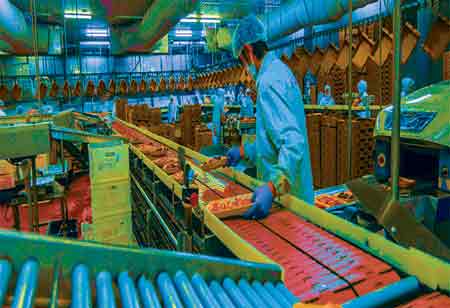Thank you for Subscribing to Food Business Review Weekly Brief
A Comprehensive Overview of Canned Food Safety Testing
Canned foods are a staple in households worldwide, offering convenience, longevity, and nutrition. Canned food testing is a crucial tool in this endeavor

By
Food Business Review | Wednesday, May 01, 2024
Stay ahead of the industry with exclusive feature stories on the top companies, expert insights and the latest news delivered straight to your inbox. Subscribe today.

Ensuring the protection and quality of products is paramount to protect consumers from potential health risks.
FREMONT, CA: Canned foods are a staple in households worldwide, offering convenience, longevity, and nutrition. Canned food testing is a crucial tool in this endeavor, allowing manufacturers, regulatory bodies, and consumers to verify the safety and quality of canned goods. The primary concern with canned foods is the risk of microbial contamination. Microbiological testing involves assessing the presence of bacteria, molds, yeasts, and other microorganisms in canned products. Common tests include total plate count, yeast and mold count, and detection of specific pathogens.
pH levels play a substantial role in determining the safety and stability of canned foods. Low-acid foods, such as meats and vegetables, must have a pH below 4.6 to inhibit the growth of harmful bacteria like Clostridium botulinum. pH testing ensures that canned products meet the required acidity levels for safe consumption. Sensory testing assesses canned foods' appearance, odor, flavor, and texture. Trained sensory panels or consumer taste tests can identify deviations from the expected quality standards, such as off-flavors, discoloration, or texture abnormalities.
Canned foods are packaged in metal containers, making them susceptible to metal contamination. Testing for metals like lead, cadmium, and mercury ensures compliance with regulatory limits and safeguards consumers from exposure to toxic substances. Nutritional testing provides valuable information about the nutrient content of canned foods, including vitamins, minerals, proteins, fats, and carbohydrates. Analyzing nutritional composition ensures that canned products meet labeling requirements and provide accurate information to consumers. Proper sealing is essential to prevent microbial contamination and maintain the quality of canned foods.
Canned foods undergo thermal processing, such as sterilization or pasteurization, to ensure microbial safety and shelf stability. Thermal processing validation involves monitoring and verifying the effectiveness of heat treatments to eliminate harmful bacteria while preserving the nutritional quality of the product. Visual inspection, metal detection, X-ray scanning, or sieving methods are employed to detect and eliminate foreign contaminants from canned products. Canned food testing encompasses diverse analytical methods to guarantee canned products' safety, quality, and compliance with regulatory standards.
Seal integrity testing involves assessing the effectiveness of a can seal through methods such as pressure testing, vacuum testing, and visual inspection to detect leaks or defects. Water activity (aw) is critical to canned foods' microbial growth and product stability. Chemical testing involves analyzing canned foods for contaminants, including pesticides, mycotoxins, and chemical additives. Ensuring compliance with regulatory limits and identifying chemical hazards is essential for protecting consumer health and safety. Manufacturers can mitigate risks, uphold consumer trust, and ensure that canned foods remain a safe and reliable food choice for consumers worldwide.






